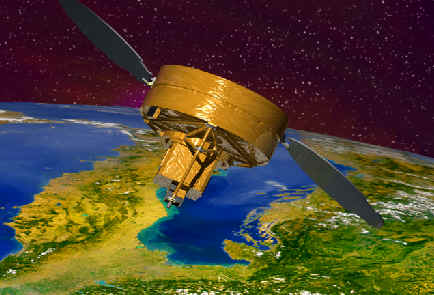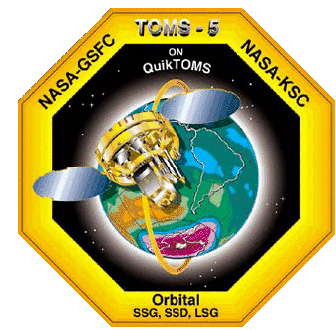
|
||||||||||||||||||||||||
|
Taurus Rocket Fails To Deliver Ozone-Monitoring QUIKTOMS To Orbit
The NASA QuikTOMS ozone monitoring satellite launched on September 21st was lost due to the failure of the commercial launch vehicle purchased by the Agency to deliver the payload into orbit. Nasa spokesman Ed Campion said losing the ozone monitoring satellite, QuikTOMS, would cost the agency $50 million, including $11 million for its share of the launch. The 91-foot rocket also carried 48 acrylic capsules, each filled with human ashes. The lipstick-sized capsules were to remain bolted to one of the rocket's stages and orbit the planet for several years before burning up in the atmosphere. Celestis, which launches small capsules of human remains into space for $5,300 apiece, had sent portions of ashes of 48 people with the rocket. QuikTOMS was a secondary payload on board a Taurus rocket launched by Orbital Sciences Corporation at 2:49 p.m. EDT from Vandenberg Air Force Base, California.
Everything appeared to go as planned with the launch until approximately 83 seconds into the flight when there was an apparent problem between the first and second stage separation. For reasons yet unknown, the rocket appeared to briefly veer off course before correction motors restored the vehicle to its proper flight path. Flight managers believe problem with staging caused the rocket to lose velocity, which resulted in QuikTOMS and the other payloads being placed in an improper orbit with insufficient speed. "Obviously we are disappointed at the loss of the QuikTOMS satellite," said Dr. Ghassem Asrar, Associate Administrator for the Office of Earth Science at NASA Headquarters in Washington. "This loss of QuikTOMS does not mean a loss in our ozone monitoring capability. We have the current TOMS Earth Probe satellite in orbit which will continue its observations and we plan to launch the EOS-Aura satellite in 2003 to assure the continuity of these critical ozone measurements." Orbital Sciences Corporation will convene a failure investigation committee, to determine the cause of today's launch failure. NASA has been invited to lend its expertise, as an observer, to the investigation. Orbital believes that it gathered sufficient data during the flight to enable the company to identify the cause of the failure. Dulles, VA 21 September 2001) - Orbital Sciences Corporation (NYSE: ORB) announced today that the launch of its Taurus rocket, which was carrying the OrbView-4 satellite for ORBIMAGE and the QuikTOMS satellite for NASA, did not achieve the mission's intended orbit. Approximately one and a half minutes after the Taurus rocket lifted off from Vandenberg Air Force Base in California, an in-flight anomaly was observed during the rocket's second stage powered flight. As a result, Orbital believes the rocket released the satellites at a lower altitude and velocity than intended and that they did not achieve a stable orbit. QuikTOMS Mission The QuikTOMS mission is to continue daily mapping of the global distribution of the Earth's total column of the atmospheric ozone with Total Ozone Mapping Spectrometer Flight Model 5 (TOMS-5). TOMS-5 was scheduled to be launched in the year 2000 aboard the Russian satellite, Meteor-3M(2), but the Meteor-3M(2)/TOMS-5 mission was terminated in April 1999. Because of the timeliness requirement of ozone monitoring, NASA had to formulate a new mission to fly TOMS-5 in a very short time. The continuous observation of the global ozone past the year 2000 is critical in order to monitor the expected recovery of ozone as levels of chloroflourocarbons (CFCs) decrease from their current maximum as a result of the Montreal Protocol limits. The QuikTOMS spacecraft is a modified Microstar Bus tailored for the QuikTOMS mission, and is procured through the NASA/GSFC Rapid Spacecraft Development Office (RSDO)'s the Indefinite Quantity Indefinite Delivery (IQID) contract from the RSDO's catalog. The launch vehicle for QuikTOMS is Taurus. QuikTOMS, as a secondary payload, shares the ride with with Orbview-4. The launch vehicle service is procured through the contract between NASA/KSC and the Orbital Sciences Corporation.
|




